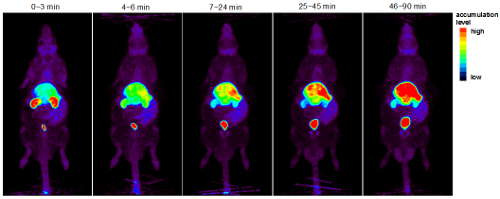 11C Labelled Vitamin B1
11C Labelled Vitamin B1
RIKEN was, from its earliest days, a pioneer in vitamin research. In fact, Umetaro Suzuki, one of the institute’s founders, discovered the first vitamin—vitamin B1, or thiamine—in rice bran in 1910, and continued his research in the area after joining RIKEN. Though he successfully isolated the compound and called it aberic acid, he never gained proper recognition for the discovery, though he is generally credited as a pioneer of vitamin research.
A century later, RIKEN is still on the leading edge of vitamin research. In May, researchers from the RIKEN Center for Life Science Technologies (CLST) announced the development of a technique to "tag" vitamin B1 and a thiamine analogue, fursultiamine, with a short-lived radioisotope of carbon,11C (which has a half-life of 20.4 min), allowing the use of PET imaging to determine how the vitamin spreads through the body following injection.
Though vitamin B1 is known to be important in preventing fatigue, the precise mechanism through which it does this is still not well understood. According to Hisashi Doi and Yasuyoshi Watanabe of CLST, who led the group in collaboration with pharmaceutical company Takeda, “We have successfully carried out experiments in rats, and now we plan to do studies in humans as well, to learn more about how vitamin B1 exercises its action in the body. It was a very difficult process to synthesize the11C-labelled compounds, and we look forward to putting it to use.”
The research was published in the Journal of Organic Chemistry.

Concentration of11C labelled vitamin B1 over time
